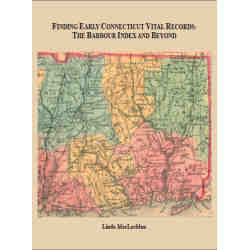Description
This is another volume in a series of records pertaining to the inhabitants of Scottish towns and cities in the 17th and 18th centuries, any number of whom or whose progeny ultimately made contact with the New World. Other volumes in the series cover the towns of Kirkcaldy, Dundee, Perth, Stirling, and, to a limited extent, Aberdeen. The books are designed to be aids to local historians and genealogists. The records in this volume are based overwhelmingly on primary sources, including the Ayr Burgess Roll, National Archives in London, Fastil Ecclesiae Scoticanae in Edinburgh, and the Scottish Guardian and Edinburgh Advertiser.
Until 1681 Greenock was primarily a small port trading with Ireland. After securing a charter in that year, the town began to engage in transatlantic trade, ultimately becoming Scotland’s leading port of exit for the Americas. Greenock’s trading ties extended from Greenland in the north to the West Indies in the south, with the emphasis being on the colonies of the Chesapeake. Its economy would come to revolve around shipping, trade, and manufacturing, and its most famous native son was James Watt (1736-1819), inventor of the condensing steam engine.
Like the earlier books in this series, the Greenock volume does not claim to be exhaustive for the years under investigation; instead it captures some of the town’s inhabitants and illustrates the kinds of records that are available for the period. Dr. Dobson has arranged the burghers alphabetically and has unfailingly given the individual’s occupation, an identifying date, and his source. In numerous instances he has also extracted supplementary information, variously consisting of date of birth; name of spouse, children, and/or parents; name of ship traveled on; date of will; etc., in the process amassing thousands of significant leads for genealogists.






Reviews
There are no reviews yet.